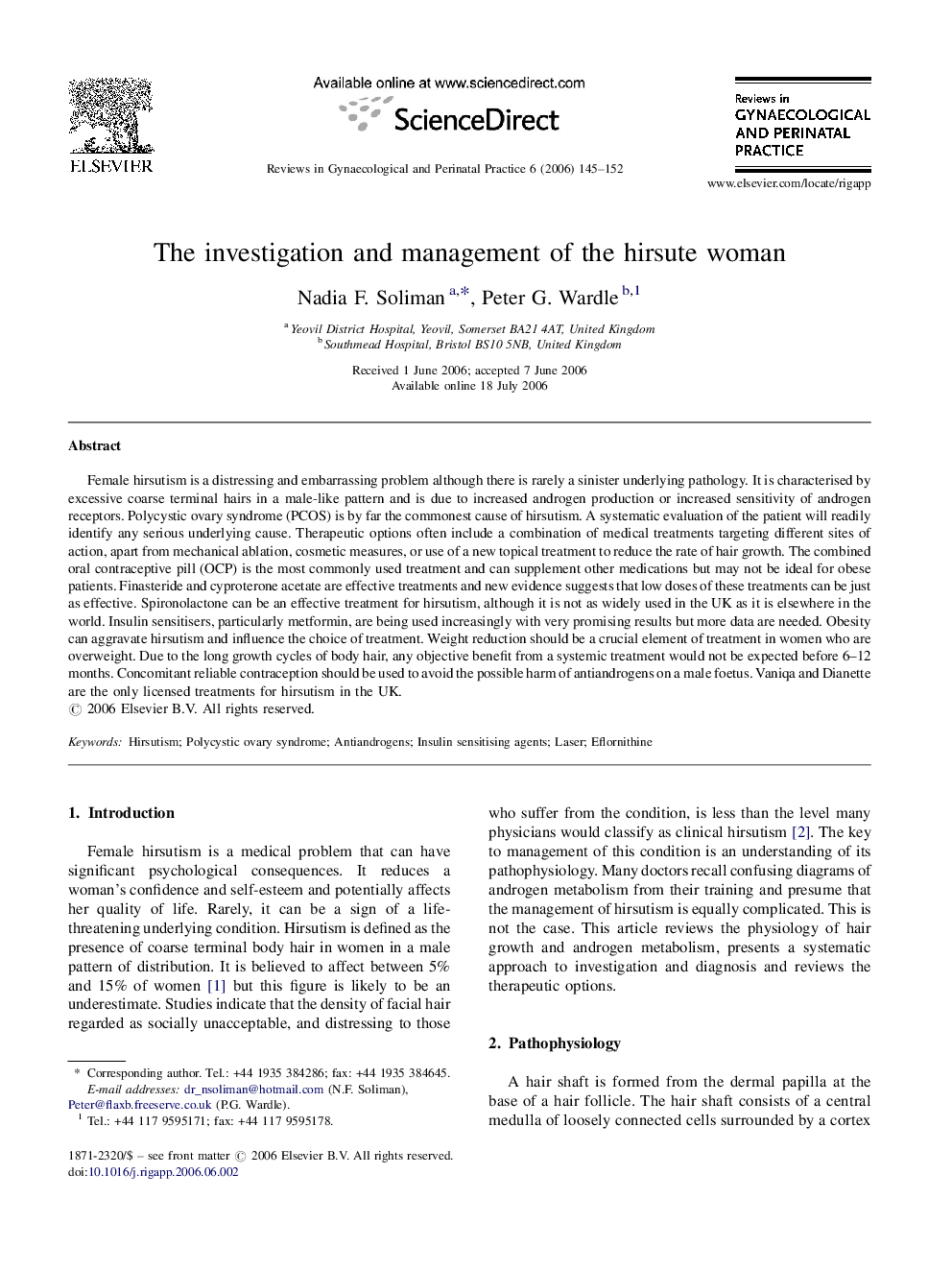| Article ID | Journal | Published Year | Pages | File Type |
|---|---|---|---|---|
| 3973689 | Reviews in Gynaecological and Perinatal Practice | 2006 | 8 Pages |
Female hirsutism is a distressing and embarrassing problem although there is rarely a sinister underlying pathology. It is characterised by excessive coarse terminal hairs in a male-like pattern and is due to increased androgen production or increased sensitivity of androgen receptors. Polycystic ovary syndrome (PCOS) is by far the commonest cause of hirsutism. A systematic evaluation of the patient will readily identify any serious underlying cause. Therapeutic options often include a combination of medical treatments targeting different sites of action, apart from mechanical ablation, cosmetic measures, or use of a new topical treatment to reduce the rate of hair growth. The combined oral contraceptive pill (OCP) is the most commonly used treatment and can supplement other medications but may not be ideal for obese patients. Finasteride and cyproterone acetate are effective treatments and new evidence suggests that low doses of these treatments can be just as effective. Spironolactone can be an effective treatment for hirsutism, although it is not as widely used in the UK as it is elsewhere in the world. Insulin sensitisers, particularly metformin, are being used increasingly with very promising results but more data are needed. Obesity can aggravate hirsutism and influence the choice of treatment. Weight reduction should be a crucial element of treatment in women who are overweight. Due to the long growth cycles of body hair, any objective benefit from a systemic treatment would not be expected before 6–12 months. Concomitant reliable contraception should be used to avoid the possible harm of antiandrogens on a male foetus. Vaniqa and Dianette are the only licensed treatments for hirsutism in the UK.
